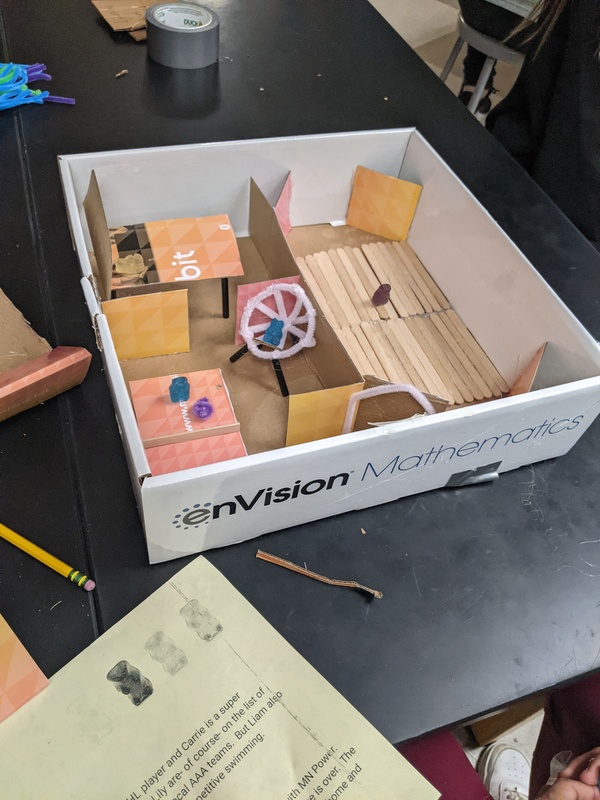Hermantown Middle School is in its second year of providing students with a STEAM (Science, Technology, Engineering, Arts, and Math) quarter curriculum. This class brings learning experiences that many students have not interacted with before: design thinking, collaboration skills, tolerance for ambiguity and non-closure, approaching novel experiences, fine motor skills, and creativity just to name a few. Some of these terms may be unfamiliar to you, e.g., tolerance for ambiguity and non-closure refers to not knowing where things will end up but moving through the process anyway, being able to experience that not every project needs closure nor has to be completed in its entirety.
One way these experiences are introduced is in an activity Mrs. Klyn does with her students during their first week of the STEAM class. Design thinking encourages students to focus on the human needs when creating. Students are asked to build a house for a gummy bear family, they read through the different families' needs and pick one to design a home for. Fine motor skills like using hot glue guns, drawing, and cutting are used on a wide variety of materials like pipe cleaners, cereal boxes, string, popsicle sticks, etc. Mrs. Klyn gives the students a short amount of time to brainstorm and build -- it’s set up this way so students are not able to create a fully finished project. She does this for several reasons: students can use building as a way of brainstorming, if you know it’s not going to be perfect there’s some freedom with engaging big ideas, thinking about how they might continue their work, and what they might have done differently. This can be an uncomfortable process for many students who view school as a place that only honors perfection. Rapid prototyping like this forces students to let go of perfection, there’s no way they’re going to create a finished project, so it allows them to enjoy the creative process.
Why do courses like this matter? In a world where many of our core subjects are driven by state testing, our students miss out on the creative outlets and freedom of expression that can be used to solve problems. Activities like the one mentioned above counterbalance the rigors of state testing restraints and require students to use their whole brain, combining both logical reasoning and creative thinking skills. Courses like this one expose our students to cooperation and compromise in group settings which is essential for shaping our students into well-rounded citizens.


